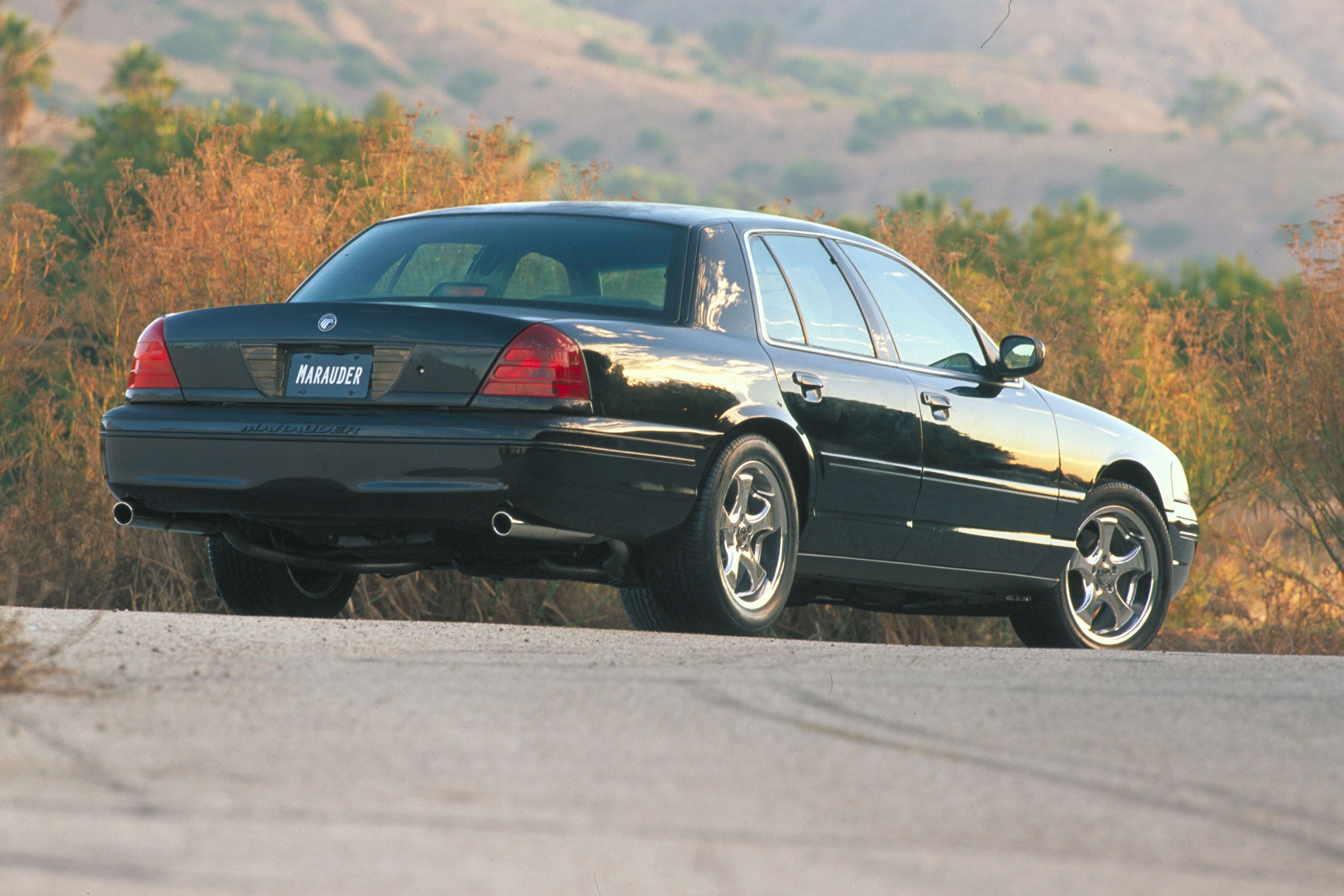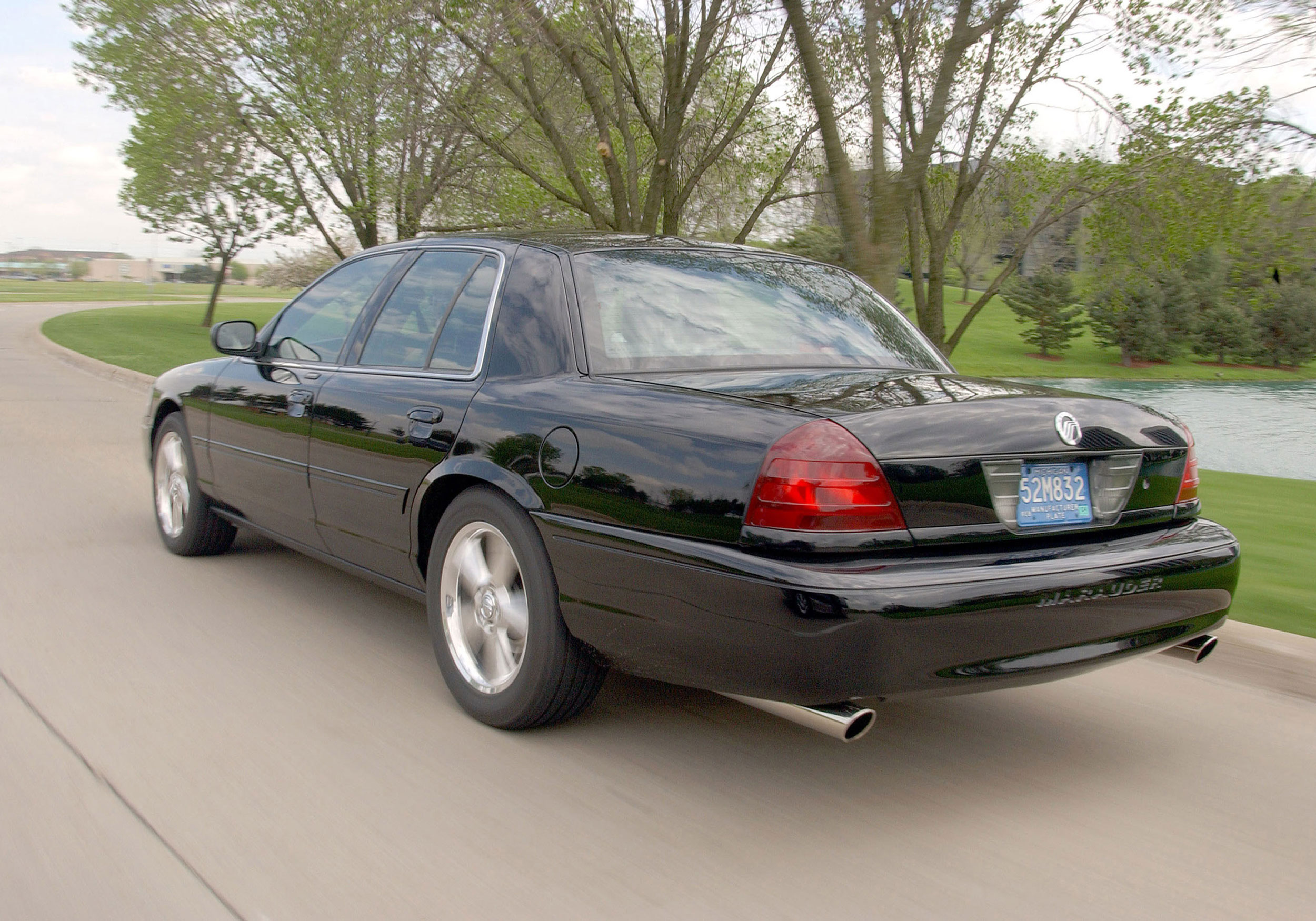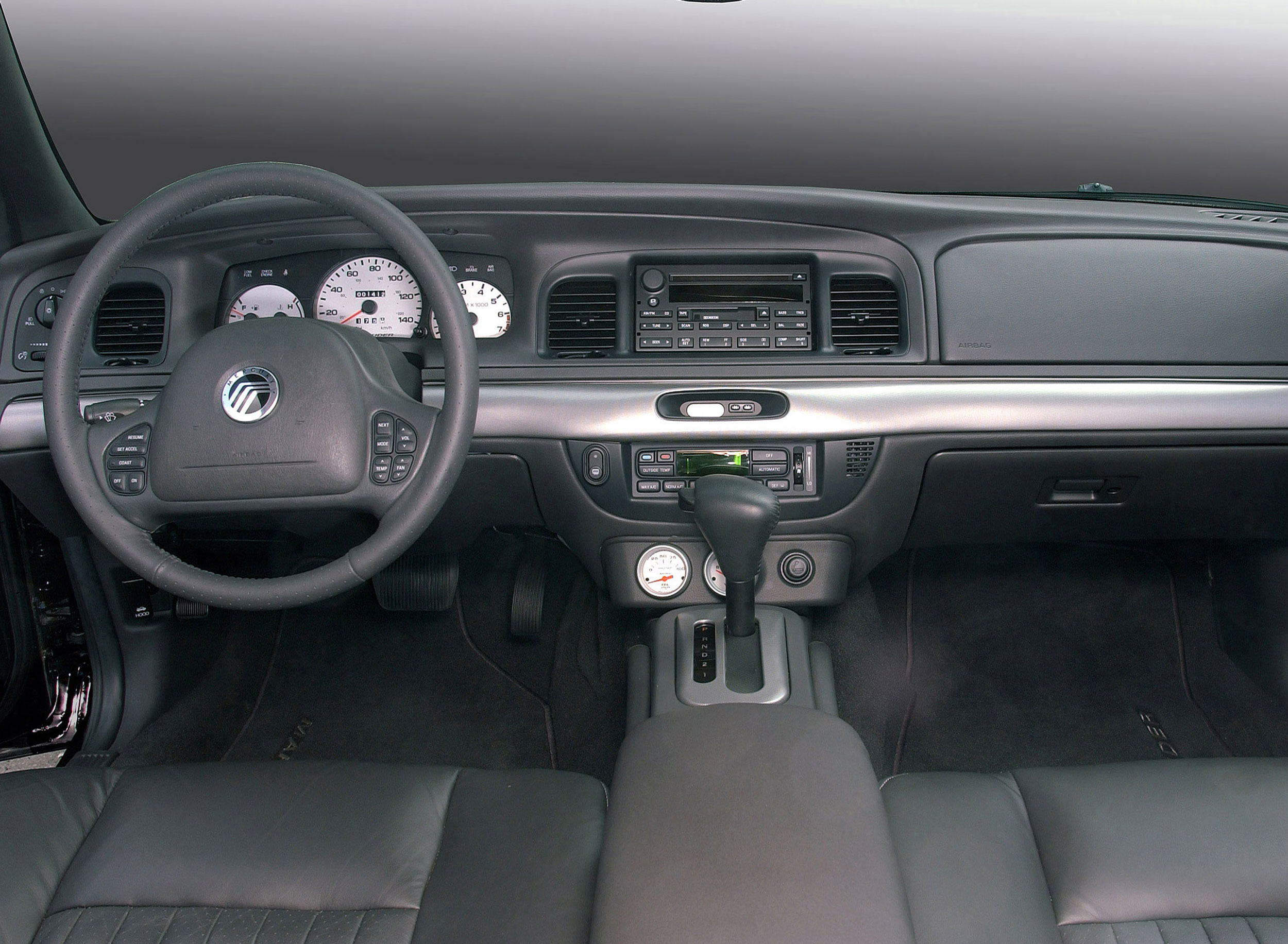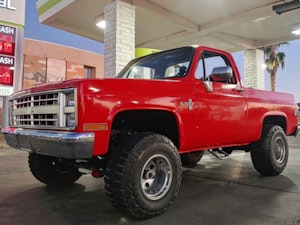Media | Articles
Crazy ’bout a Mercury (Marauder)… but not the price
Country music superstar Alan Jackson scored a #2 hit in 1993 with “Mercury Blues,” a song first recorded in 1948 that tells of a man wanting to buy a ’49 Mercury to win back an ex-girlfriend. Nobody, of course, could have thought the chorus—“I’m crazy ’bout a Mercury!”—was an ode to the Tracer econobox or Villager minivan.
Even Ford, it seems, wasn’t too crazy about its upscale sister division by then. When Jackson sang the song for a TV spot in 1996, the words became, “I’m crazy ’bout a Ford truck.” Mercury’s final curtain call was still some years away, but the brand’s best days were far behind it.
Some within Ford, however, found inspiration in… a Chevy. Steve Babcock, a program manager on the Crown Victoria/Grand Marquis team, had admired the 1994–96 Impala SS and was encouraged by the four-door muscle car’s success, with nearly 70,000 sold in three years. He envisioned doing a muscled-up Crown Victoria and contracted Roush Industries to build a prototype to test the idea.
“Initially, I planned it as a Ford, but I wanted to use the Marauder name from Mercury’s history,” Babcock says, citing the brand’s performance/luxury models of the 1960s. When Ford product management showed no interest, Mercury adopted the project to invigorate the stagnant brand.
SEMA debut
Marketplace
Buy and sell classics with confidence

Packing a supercharged version of Ford’s 32-valve, 4.6-liter dual-overhead-cam V-8, the all-black Mercury Marauder concept debuted at the 1998 SEMA Show in Las Vegas, just as the Impala SS concept had six years before.
Babcock is quick to give credit where it’s due. “Chevy created that market with the Impala SS. We were aiming for the same customer.”
Positive reaction to the sinister-looking hot rod Merc came from dealers, the public, and the aftermarket, which helped score production approval. Babcock worked with Roush to develop the Marauder, raiding the corporate parts bin and creating new pieces to build a well-rounded performance car. A major marketing error and other unforeseen factors would lead to an unfortunately quick demise, but the 2003–04 Marauder enjoys a loyal following today.
Building the perfect beast

Because the “Panther” platform that underpinned the Ford Crown Vic, Mercury Grand Marquis and Lincoln Town Car was being re-engineered for 2002, the Marauder would not arrive until more than three years after the SEMA debut. What emerged, though, remained faithful to the concept.
The Marauder front end was based on the Grand Marquis, but with smoked headlight lenses, a blackout grille, and a unique bumper cover with larger air inlet and fog lights. Side trim came from the Crown Vic LX, and the rear used smoked Crown Vic taillights and a special bumper with cutouts for the big dual tailpipe extensions.
Instead of the prototype’s supercharged engine, the Marauder got a variation of the naturally aspirated, aluminum DOHC, 32-valve V-8 used in the 2002 Lincoln Aviator and 2003 Mustang Mach 1. Babcock says the aluminum intake manifold was different than the Aviator’s to reduce cost and weight and improve heat dissipation for more consistent launch performance.

The Marauder engine made 302 hp at 5750 rpm and 318 lb-ft of torque at 4250 rpm. Redline was 6100 rpm. For 2003, it was teamed with Ford’s 4R70W four-speed automatic transmission with a higher stall speed torque converter. An aluminum driveshaft channeled torque to a 3.55:1 axle ratio.
In comparison, the 1994–96 Impala SS had 260 hp at 5000 rpm and 330 lb-ft at 3200 rpm and used a 3.08:1 axle ratio. In Car and Driver’s hands, the 4280-pound Marauder trailed the Impala SS: 0–60 in 7 seconds vs. 6.5 and the quarter-mile in 15.5 seconds at 91 mph vs. 15.0 at 92 mph. The Marauder’s top speed was limited to 117 mph to protect against driveshaft vibration. The 4220-pound Impala could hit 140.
Roush worked with Faurecia, an OEM supplier, to develop the dual exhaust system specifically for this model, and the Marauder tailpipes emitted a more muscular sound than the Impala SS. “They went through five systems before getting the sound we wanted,” Babcock says.
Not a cop car

The 2003 Panther chassis used a much stronger frame than the earlier version and featured new rack-and-pinion steering and revised suspension. Rear shocks were moved outboard of the frame, a boon to handling and stability.
Stiffer bushings, a thicker front stabilizer, front springs from the Ford Crown Vic Police Interceptor, and Tokico nitrogen monotube shocks made the Marauder an agile handler. Self-leveling rear air suspension came with the heavy-duty axle from the Town Car limo package.
The 18 x 8-inch five-spoke polished aluminum wheels were huge for a sedan at the time, and the classic Mercury “god-head” center caps reached back into brand history. They wore BF Goodrich G-Force T/A radials, 235/50ZR up front and 245/55ZR18 on the back.

“We had to roll the fender lips to fit the tires,” Babcock says. “To spread the development costs, the Crown Vic and Grand Marquis got those, as well.”
According to Car and Driver, the Marauder achieved 0.86g on the skidpad, matching the Impala SS. The magazine described the Marauder as “thoroughly sorted, nicely balanced—more ‘disciplined sedan’ than ‘delinquent hot rod.’”
The sophistication carried into the cabin, with leather-trimmed front bucket seats and an exclusive instrument cluster packed with Auto Meter Pro-Comp gauges, including temperature and oil pressure gauges and even a voltmeter.
Pricing pipe dream

All that “discipline” and luxury came at a price. The 2003 Marauder started at $34,495, including delivery, but Babcock says the sticker was originally planned to be $29,500. The marketing director, he recalls, accepted advice from some dealers that a higher price would help the Marauder compete with upscale imported sport sedans. “But that wasn’t our customer,” he says.
The price became an obstacle. Mercury introduced the 2003 Marauder in spring 2002, but the 7838 made in the extended model year came up well short of the 10,500 Babcock’s team originally projected. (Babcock recalls internal discussion of building as many as 18,000 per year.) Of those, 7093 were black, 417 were Silver Birch, and 328 were Dark Blue Pearl.
Despite engine tweaks to boost low-end torque, plus traction control and improved 4R75W transmission and other enhancements for 2004, Marauder production fell to 3214 (1237 black, 997 Silver Birch, and 980 Dark Toreador Red). Total for the 2 1/2-year run was 11,052 cars, barely one-sixth of what the Impala SS did.
That sealed Marauder’s fate, and also ended plans for a factory supercharged version, and possibly similar performance packages for other Mercury models, Babcock says. The brand, he explained, would focus on attracting more women.
Babcock is proud, however, that the “failed” Marauder was a profit-maker. “The whole Marauder program cost $39 million, and profit was about $100 million,” he says.
Driving to Marauderville
20180918155347)
Mercury’s new tact neglected women like Mary O’Keeffe, a Cape Cod, Massachusetts, resident who prefers her cars to be “a little different, with more power.”
Late in 2002, O’Keeffe and her husband at the time, Bob Tischler, replaced their 1993 Thunderbird Super Coupe with a black Marauder. Looking for ideas to modify the car for higher performance, they discovered the mercurymarauder.net website. “Buying this car, a culture came along with it,” O’Keeffe says.
She adds that owners were not necessarily Mercury customers but were specifically fans of the Marauder. Some were looking for a successor to the Impala SS. Aftermarket support was strong, despite low production, and modified cars are common in the Marauder community.
Logan McLeod, the website founder, also instigated an owner meetup in 2003. It became an annual event, drawing 30–40 owners from around the country. “We called the first one ‘Marauder Roundup,’ but changed the name to ‘Marauderville’ for the rest,” O’Keeffe says.
The group rented drag strips, NASCAR tracks, and road courses. The Woodward Dream Cruise became the meetup one year, and events also included tours of museums, breweries, and distilleries. Babcock attended all but three, offering owners technical advice.
“We had one every year except last year. It became too much work to make happen,” O’Keeffe says. “Our biggest gathering now is the All Ford show at Carlisle in June.”
Separated but still close, O’Keeffe and Tischler both drive Marauders. He has the couple’s original black car, now supercharged, and her Silver Birch daily driver has 210,000 miles. Along with a third party, O’Keeffe and Tischler bought mercurymarauder.net in 2012. “It’s a great resource, with how-to articles and a good for-sale section,” O’Keeffe says.
Fourteen years after its hasty departure, the Marauder continues to generate interest. “We’re seeing younger people buying them now,” O’Keeffe says.
Maybe the performance direction could have worked out for Mercury, after all.









20180918155352)
20180918155356)
20180918155401)
20180918155406)
20180918155411)
20180918155418)
20180918155423)


I personally own 5 Marauders, one 2003 concept Supercharger, 1 2003 Turbocharger, 355 posi rear, 1 2003 police interceptor with no limiter 174 MPH, 1 2004 long tube headers, performance Chip, 410 rear and a 2004 fully loaded with sun roof power everything heated seats, mirrors one owner. All stock! The Turbocharger is the badest of all of them!! You can spin rear wheels at 60 mph!